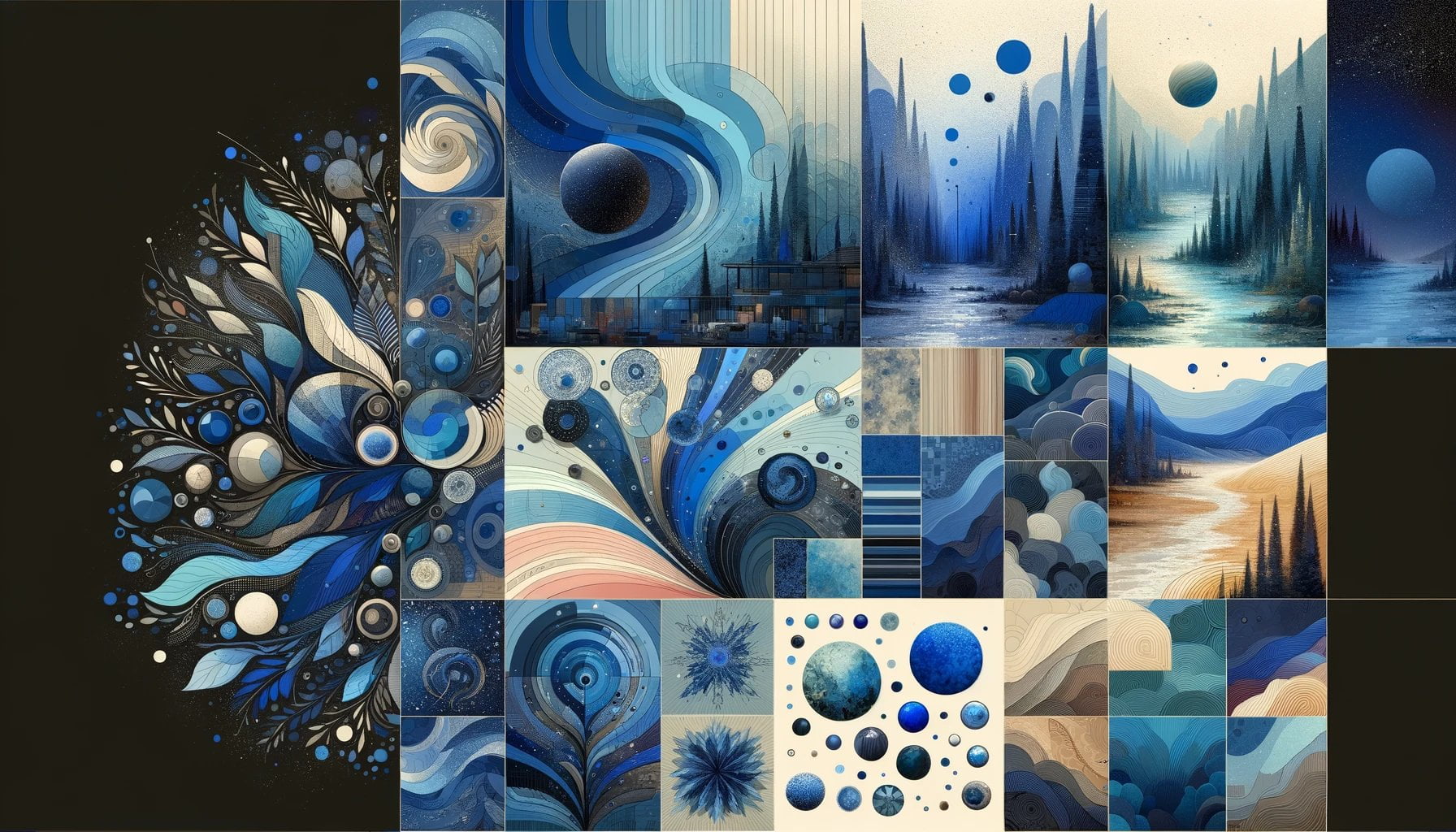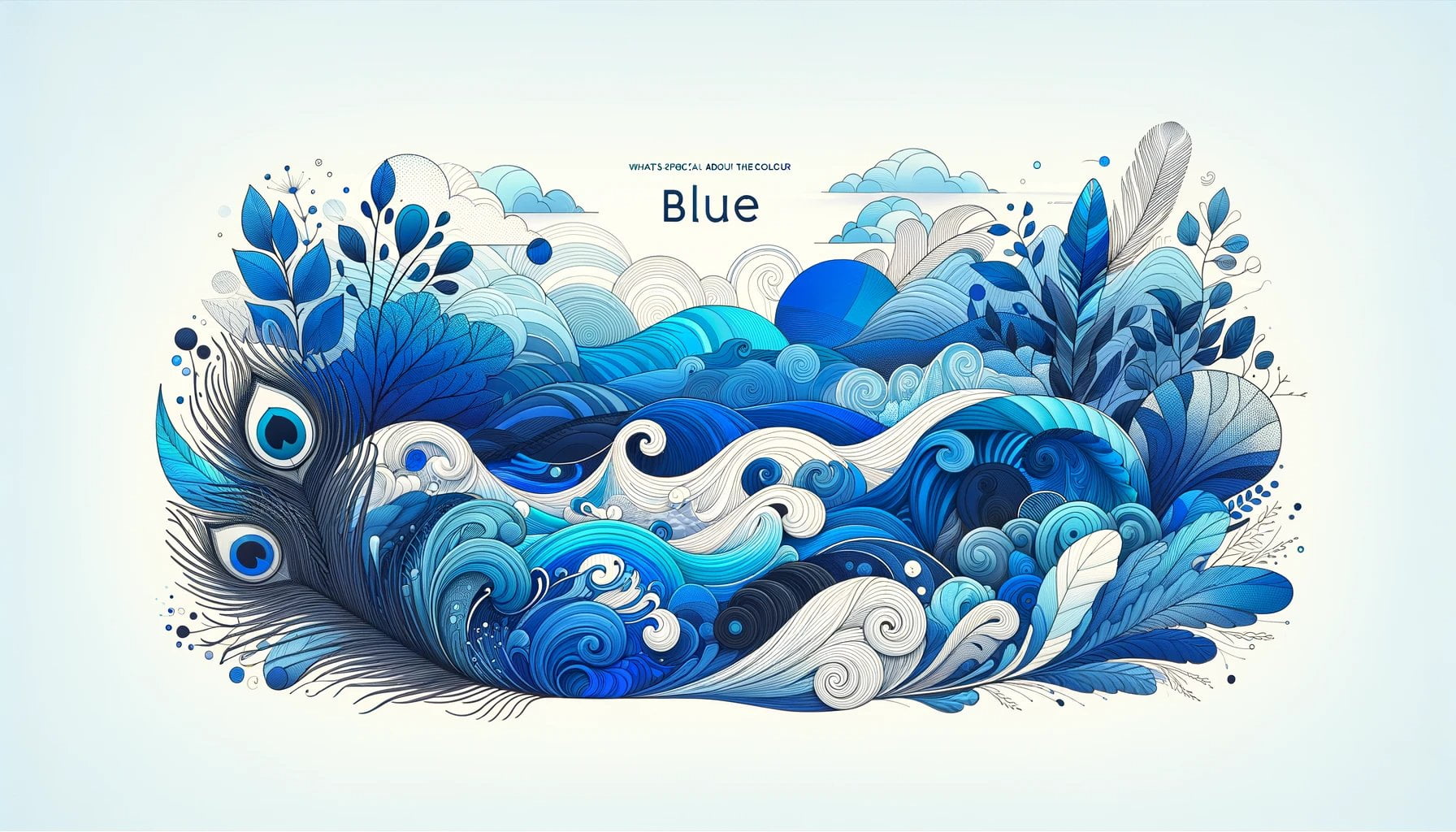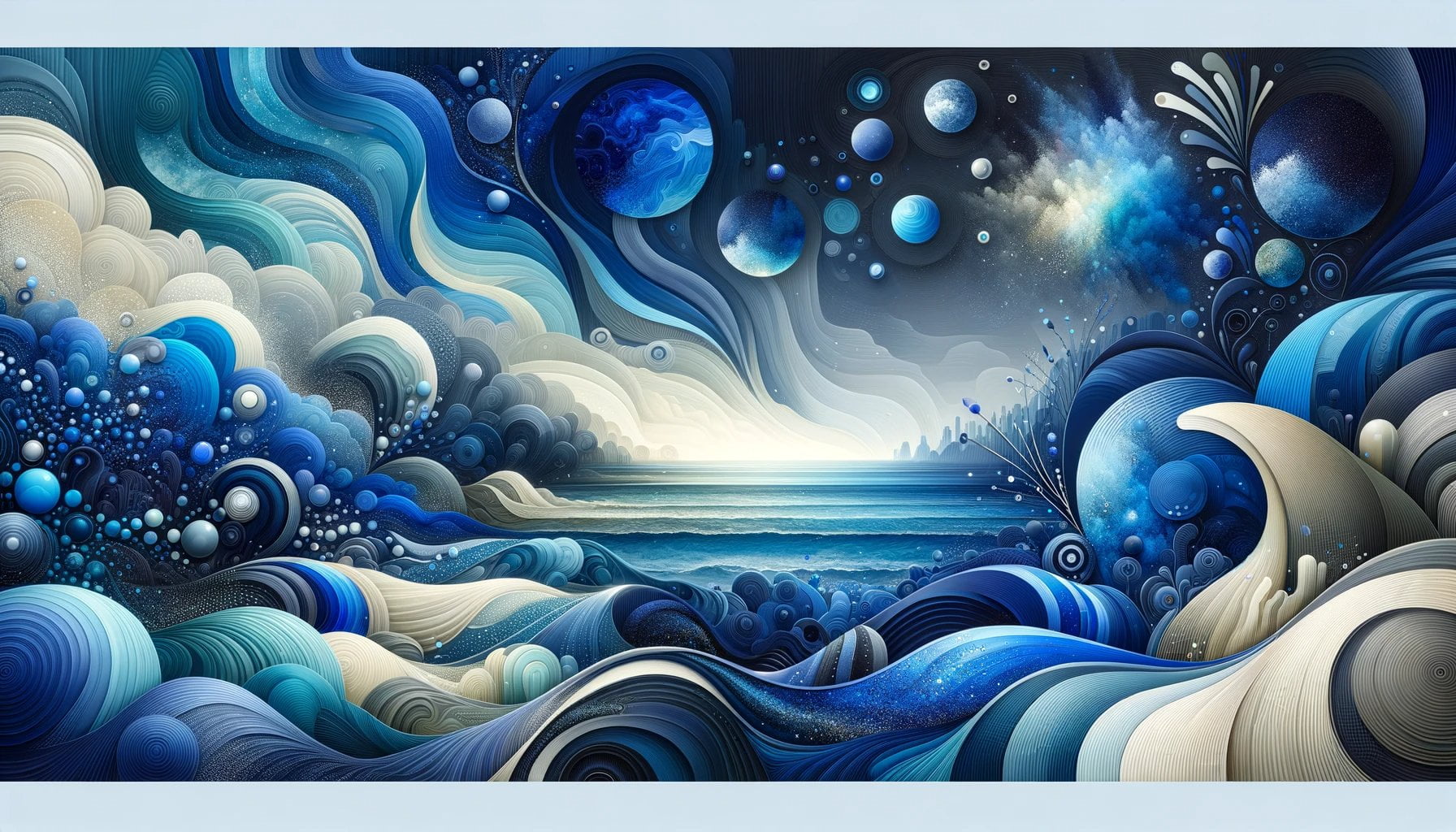The Captivating Allure of Blue: Unlocking its Tranquility, Imagination, and Trust. Few colors possess the enchanting power to instantly transport us to a state of tranquility, ignite our imagination, and evoke a sense of trust quite like blue. As an art historian deeply fascinated by the psychology of colors, I have spent years unraveling the emotional and cultural significance behind various hues. Through extensive research and analysis, I have come to appreciate the unique allure of blue, a color that transcends boundaries and captivates individuals across different cultures and time periods. In this article, we will delve into the special qualities that make blue such a beloved and cherished color, with its unrivaled ability to inspire serenity, foster creativity, and symbolize trust.

Key Takeaways:
- Blue is associated with calmness, stability, security, and order.
- Blue has a short wavelength of around 450 nanometers.
- After World War II, blue became a gendered color for boys.
- Blue symbolizes the sky and the ocean due to the scattering and absorption of light.
- In some cultures, blue is linked to sadness, aloofness, mourning, and pain.
- Blue has a Biblical meaning of heavenly grace and is often associated with the Virgin Mary.
- Blue is believed to suppress appetite, enhance productivity, and stimulate creativity.
What’s Special about the Color Blue?
The color blue holds a captivating allure that has fascinated people across cultures and time periods. From the tranquility it evokes to the trust it symbolizes, blue has a unique appeal that sets it apart from other colors. Let’s explore what makes blue so special and why it continues to captivate our imagination.
The Calming Influence of Blue
Imagine gazing into a clear blue sky or the serene depths of the ocean. Blue has a remarkable ability to create a sense of tranquility and calmness. It soothes our minds and instills a feeling of peace within us. Whether it’s a soft pastel blue or a vibrant royal blue, this color has the power to transport us to a place of serenity and relaxation.
The Importance of Stability and Trust
Blue is often associated with stability, security, and order. Just like the sky above us and the vast ocean that stretches into the horizon, blue signifies a sense of dependability and reliability. It symbolizes trust and integrity, making it a popular choice for conveying a sense of professionalism and credibility. We instinctively trust the color blue, as it represents qualities we value in ourselves and others.
A Gateway to Imagination and Creativity
Blue has the ability to inspire our imaginations and ignite our creativity. It opens the door to endless possibilities and invites us to explore new ideas and concepts. Think about the vast expanse of the sky, where clouds form various shapes and configurations. Blue sparks our curiosity and encourages us to dream, imagine, and create.
Now, let’s delve into some interesting facts and associations related to the color blue:
Blue’s Short Wavelength and Color Gender Associations
Did you know that blue has one of the shortest wavelengths of all colors in the spectrum? Measuring around 450 nanometers, it falls on the cooler end of the color spectrum.
In the past, blue was not always associated with masculinity. However, after World War II, blue became the designated color for boys, while pink was associated with girls. This gendered color association has influenced cultural perceptions since then.
Blue as a Symbol of Heavenly Grace and Sadness
Blue holds great significance in various cultures and religions. In Christianity, blue is associated with heavenly grace and is often worn by the Virgin Mary. It represents purity, spirituality, and divinity.
Interestingly, in some cultures, blue is also linked to sadness, aloofness, mourning, and pain. It can evoke a sense of melancholy and introspection. However, this association may vary depending on cultural interpretations.
Blue’s Impact on Appetite, Productivity, and Creativity
Did you know that the color blue is said to suppress appetite? It is believed to reduce hunger cravings, making it an interesting color choice for weight loss programs or mindful eating spaces.
Furthermore, blue has been found to encourage productivity and stimulate creativity. It can enhance focus and concentration, making it a favored color for workspaces and artistic endeavors. So, if you’re looking to boost your productivity or tap into your creative side, surrounding yourself with blue might just do the trick!
In conclusion, the color blue has a magnetic allure that transcends cultural boundaries and time periods. Its calming influence, symbolic significance, and ability to stimulate imagination and creativity make it a truly special hue. Whether you find solace in the tranquility it offers or draw inspiration from its vast possibilities, blue continues to captivate our senses and leave an indelible mark on our hearts. So go ahead, embrace the captivating allure of blue and let it spark your imagination!
Blue is not just a beautiful color, it also holds fascinating facts about its nature, symbolism, and psychology. Discover some intriguing facts about the color blue by clicking here. Want to know some fun facts about the color blue? Click here to uncover interesting trivia about it. Curious about facts relating to colors in general? Click here to explore five captivating facts about colors.
The Cultural Significance of Blue in Different Societies
Blue is a color that carries unique meanings and symbolisms in various cultures across the world. From representing elements of nature to embodying emotions and beliefs, blue holds deep cultural significance in different societies. Let’s explore how this captivating color is viewed and interpreted in select cultures:
Chinese Culture
In Chinese culture, blue is linked to the five primary elements, the directions, and the four seasons. It holds great symbolism in aspects of life and nature, representing harmony, stability, and transcendence. [^1^]
Iran
In Iran, blue, blue-green, and green are considered sacred colors. They symbolize paradise and hold immense importance in the culture. These colors evoke a sense of spirituality and connection to the divine. [^1^]
Latin American Countries
Blue is a sign of hope in Latin American countries. While it represents optimism and positive energy, it is also associated with mourning and remembrance. The color blue carries deep cultural significance, reflecting emotions and beliefs within these societies. [^13^]
Greece
In Greek culture, blue is believed to protect against “the evil eye.” It serves as a symbol of national pride, representing their heritage and identity. Blue resonates with a sense of loyalty and guards against negative influences. [^12^]
Korea
In Korean culture, dark blue is the color of mourning. It signifies grief and loss, reflecting the cultural practices and beliefs surrounding mourning and remembrance. [^2^]
India
Blue holds profound meaning in Indian culture, representing truth, mercy, and love. It is associated with virtues and is often linked to the divine. Blue is a color of significance and plays a role in religious ceremonies and traditions. [^3^]
Western Cultures
In Western cultures, blue is often associated with safety and trust. It is commonly used to symbolize masculinity and authority. Projecting attributes of loyalty and security, blue carries a sense of professionalism and credibility. [^5^]
Eastern Cultures
In Eastern cultures, blue is linked to notions of immortality, spirituality, and heaven. It represents transcendence and a connection to the divine. Blue is a color that evokes a sense of awe and serenity, inviting individuals to explore the depths of their spiritual selves. [^5^]
These examples illuminate the diverse interpretations and cultural significance of the color blue. From symbolizing harmony and trust to representing grief and spirituality, blue is truly a hue that transcends boundaries and captivates people worldwide.
Sources:
Key Takeaways:
- Blue holds different meanings and symbolisms in various cultures.
- In Chinese culture, blue represents elements of nature and symbolizes harmony.
- Iran associates blue with the divine, representing paradise and spirituality.
- Blue signifies hope and mourning in Latin American countries.
- Greece views blue as a symbol of national pride and protection against negative energy.
- Dark blue is the color of mourning in Korean culture, denoting grief and loss.
- In India, blue embodies truth, mercy, and love, and holds religious significance.
- Western cultures perceive blue as a color of safety, trust, and professionalism.
- Eastern cultures link blue to transcendence, spirituality, and heaven.
- The cultural significance of blue highlights the diversity and richness of traditions worldwide.
Blue as a Color that Promotes Calmness and Serenity
The Psychology of Blue
- Blue triggers feelings of calm, serenity, and tranquility.
- It decreases heart rate, lowers blood pressure, and reduces anxiety, resulting in relaxation and peace.
- The short-wavelength of blue makes us feel more relaxed, comfortable, and less stressed.
Symbolism of Blue
- Blue is associated with trustworthiness, reliability, and stability.
- It symbolizes tranquility, orderliness, and peace, often described as peaceful, tranquil, secure, and orderly.
- Its connection to nature, particularly the seas and sky, enhances feelings of peace and serenity.
Blue as a Popular Color
- Blue is the globally most popular “favorite color,” with a preference among men.
- Its ability to promote calmness and relaxation contributes to its broad appeal.
The Use of Blue in Language and Culture
- In Indian culture, blue represents divinity and is associated with the god Krishna.
- In North America, blue symbolizes trust and serenity.
- In Ukraine, blue symbolizes healing.
- In Mexican culture, blue is associated with mourning. In Aztec culture, it symbolizes sacrifice.
Health Benefits of Blue
- Blue promotes mental calmness, reduces anxiety, and contributes to peace and tranquility.
- Its physiological effects on the body, such as lowering heart rate and blood pressure, add to its positive impact on mental and emotional well-being.
Key Takeaways:
– Blue triggers calmness, serenity, and tranquility in individuals.
– It is associated with trustworthiness, reliability, and stability.
– Blue is the most popular “favorite color” globally, especially among men.
– Different cultures and languages attribute various meanings to the color blue.
– Blue has health benefits, promoting mental calmness and reducing anxiety.
Sources:
– Symbolism and Metaphor
– Verywell Mind
The use of blue in art and its impact on creativity
Artists have long recognized the profound significance of the color blue in their creations. The careful use of blue in artwork can effectively convey messages and evoke specific emotions in viewers[^1^]. Understanding the different hues of blue and their impact on the overall atmosphere and mood of a piece is crucial for artists[^1^].
Historically, blue has been a favored color among artists, and its use in famous masterpieces is testament to its enduring appeal. One such example is Sandro Botticelli’s “The Birth of Venus,” painted in 1486, which prominently features soft blue hues[^1^].
Blue extends beyond the art world and touches our daily lives. Its universal popularity stems from its ability to give life, soothe, and communicate simply through its existence. Blue seamlessly integrates into various aspects of our lives, transcending dimensions[^1^].
The use of blue in art has a rich history with diverse meanings and symbolisms attached to it. In ancient times, blue was associated with royalty due to the scarcity of a precious blue gemstone called lapis lazuli[^2^]. It has also been a symbol of trust and loyalty, consistently captivating artists and audiences alike[^3^][^4^]. Exploring the role of blue in art history provides valuable insights into the social histories of different cultures[^2^].
The fascinating history of blue pigments in art dates back to ancient Egypt, where the vibrant blue color known as Egyptian blue was invented around 2,200 B.C. This pigment coincided with the construction of the Great Pyramids, showcasing the importance of blue in ancient civilizations. Over time, various blue pigments such as azurite, ultramarine, cobalt blue, and cerulean have been discovered and utilized[^4^].
The emotional impact of blue in art is significant. Blue is often associated with calmness, tranquility, and peace. However, artists have also harnessed the power of blue to depict a range of emotions, from affection and love to rage and aggression[^6^]. Blue has the ability to resonate with viewers on both an intellectual and emotional level, creating unique and impactful compositions[^3^].
Key Takeaways:
– The color blue has a profound impact on the world of art, evoking specific emotions and conveying messages.
– Famous artworks throughout history, such as Botticelli’s “The Birth of Venus,” feature the enchanting allure of blue.
– Blue is universally loved for its ability to give life, soothe, and communicate simply through its existence.
– Blue has diverse meanings and symbolisms, symbolizing royalty, trust, and loyalty in different cultures.
– The history of blue pigments in art showcases the fascinating evolution of this color.
– Blue has an emotional impact and is associated with calmness, tranquility, and a wide range of other emotions.
Sources:
– ZenArt Supplies. “Color Blue in Art: What It Means and How to Utilize it in Artwork.” Link to source
– Invaluable.com. “The History and Meaning Behind the Color Blue in Art.” Link to source

FAQ
Q1: What makes the color blue special?
A1: The color blue is special because it has the ability to evoke feelings of calmness, tranquility, and serenity. It is also associated with qualities such as trustworthiness, reliability, and stability. Blue is widely regarded as a peaceful and non-threatening color.
Q2: How does the color blue impact our emotions?
A2: The color blue has a calming effect on our emotions. Its short-wavelength nature can decrease heart rate, lower blood pressure, and reduce anxiety, resulting in feelings of peace and relaxation. Blue can also evoke a range of emotions, from affection and love to rage and aggression, depending on its usage in art and culture.
Q3: What cultural significances are associated with the color blue?
A3: The color blue holds different meanings in various cultures. In Chinese culture, it is associated with the five primary elements and the four seasons. In Iran, blue, blue-green, and green are considered sacred colors. In Greek culture, blue is believed to ward off “the evil eye” and symbolizes national pride. These are just a few examples of the cultural diversity and symbolism attached to the color blue.
Q4: Why is blue a popular favorite color globally?
A4: Blue is the most popular favorite color globally because it has broad appeal and is often associated with calmness and relaxation. It also has a high preference among men. The soothing and tranquil qualities of blue make it a universally loved color.
Q5: How has the color blue been utilized in art throughout history?
A5: Blue has been extensively used in art throughout history due to its rich symbolism and emotional impact. Artists have utilized different blue pigments, such as azurite, ultramarine, and cerulean, to create unique compositions. Blue has been associated with royalty, trust, loyalty, and faith, and has been used to evoke a range of emotions in artworks.
- Understand bone yellow: Colorism’s impact on Black communities - April 19, 2025
- Green Natural Sandstone: Eco-Friendly Building Solutions - April 19, 2025
- Red Cross Flag: Protecting Humanity Through History - April 19, 2025
















